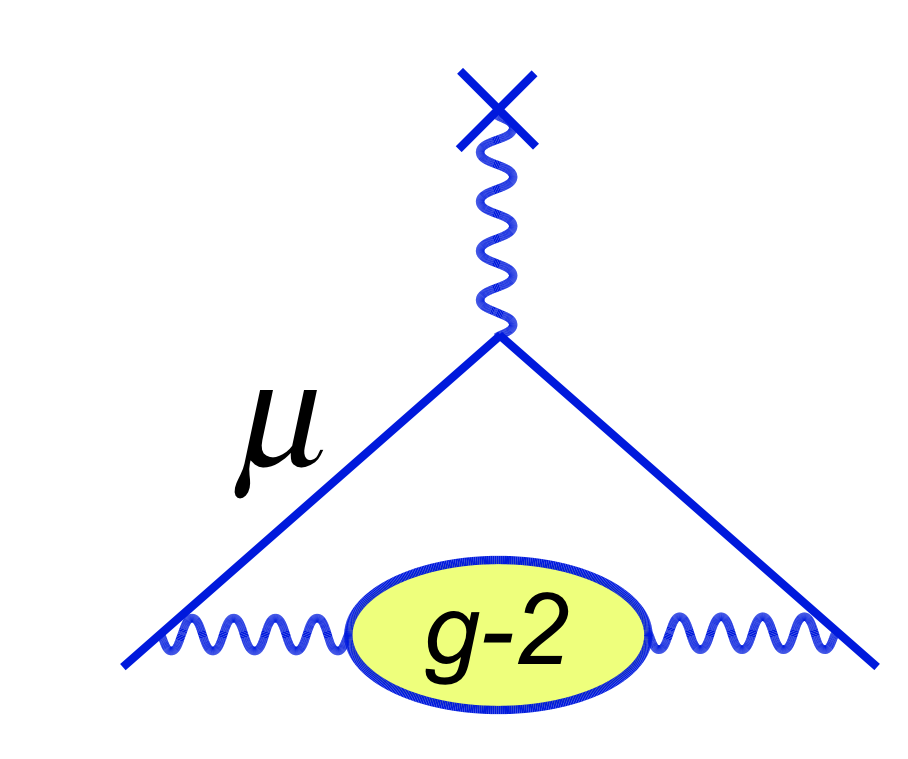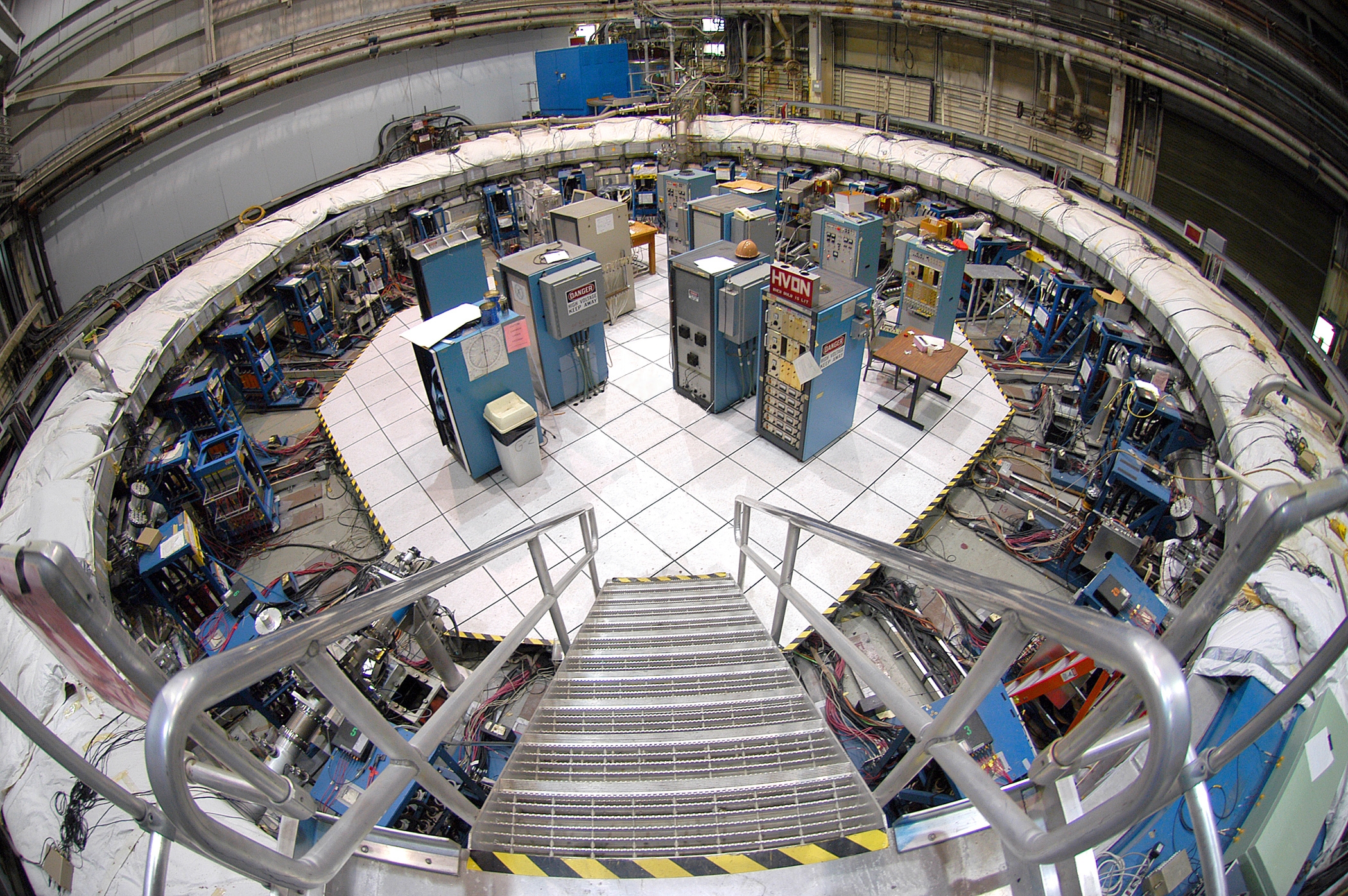The anomalous magnetic moment of the muon is particularly interesting because it is a sensitive probe for new physics at relatively high scales. It might be noted that one can also measure the electron magnetic moment, which has been done to higher precision than the muon magnetic moment. However, the electron is less sensitive to new physics because heavy virtual particles contributions scale according to the lepton mass squared. Therefore the muon anomalous moment is about 43,000 times more sensitive to these particles, which could include those from new physics, such as SUSY. This type of indirect probe of new physics is useful in general because it may cover energy scales or particular kinematic regions with problematic backgrounds that are difficult to reach with direct searches.
In addition to work to produce new results from experiment, theorists are working to improve the standard model values for the muon anomalous moment. The biggest challenge is the hadronic contribution, which dominates the uncertainty on the theory value. Even without these improvements, if the central muon g-2 value remains the same, the expected significance of a new result would be around 5 sigma, while with reduced uncertainties on the expected value from theory, the significance could be close to 9 sigma. This potential for a discovery-level deviation from theory indicating the presence of new physics, to confirm or deny the evidence level deviation from the previous result, is a strong motivator for doing this experiment and making the uncertainties as low as possible.
The Muon g-2 experiment performs the measurement of the anomalous magnetic moment using a beam of polarized muons contained in a storage ring. The muons' magnetic moment is related to their spin, which precesses as the muons travel through the ring's magnetic field. Decay electrons, which are preferentially emitted in the direction of the electron spin, are observed at detectors located on the inside of the ring. Therefore, the oscillating rate of electron detection measures the spin precession and magnetic moment. The muons themselves are produced when a beam of protons from the Fermilab accelerator complex hits a target and produces pions, which then decay to muons and neutrinos. Energy selected muons are then transported to the storage ring. It is important to precisely understand the properties of the muon beam and the storage ring's fields so any unexpected precession of the muons can be limited and/or accounted for.
There are various beam line instruments to measure the muon beam properties from pro- duction at the target, through the transport lines, around the delivery ring, and finally into the Muon g-2 storage ring. There are toroids, ion chambers, wall current monitors, SWICs, SEMs, and beam loss monitors to measure the muon beam profile, position, intensity, and losses. Finally, there is a threshold Cherenkov counter to measure the beam's species composition. The Cherenkov will be used during commissioning to verify the particle production rates immediately after the target, and the muon beam purity immediately prior to injection into the storage ring.


![[Photo of Dr. Breese Quinn]](quinn.jpg)
![[Photo of Dr. Alex Keshavarzi]](Alex_Keshavarzi.jpg)
